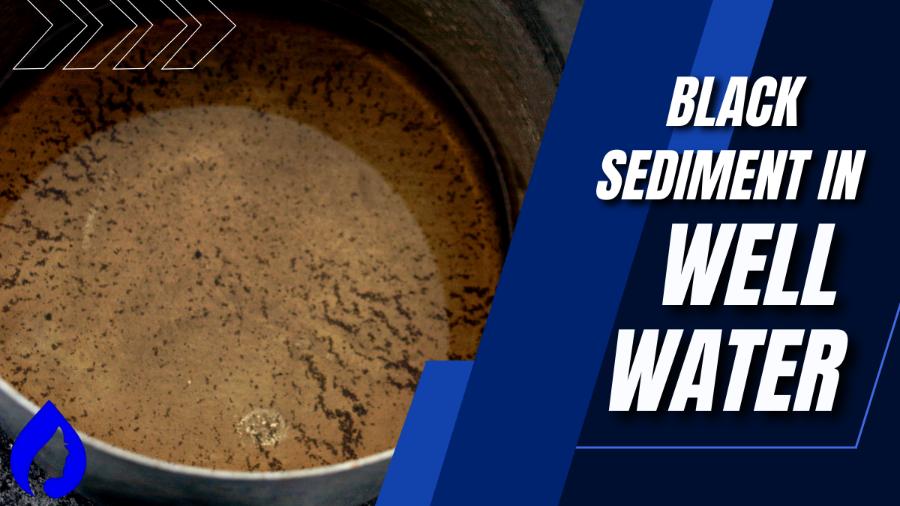
Opened the tap water and found black sediment in your well water?
The major causes of black sediments in water are clay particles from soil and mud, minerals like iron oxide and manganese, and decaying organic matter like plant roots and animal hair.
Mud or toxic organic matter in sediments can cause diarrhea and damage plumbing fixtures. In addition, excessive minerals like iron (more than 0.3 mg/L) and manganese (more than 1 mg/L) can cause liver damage and nervous system diseases, respectively.
The best way to fix black well water is to use a well water sediment filter or a metal and manganese filter.
Continue reading for an in-depth guide on the causes of black sediment in well water and how to fix it effectively.
Why Do I Have Black Well Water? (Black Sediments)
| Reason | Explanation | Is it common? | Is it dangerous? | How To Fix |
| New pump/well installation | Due to drilling | Very common | No | Wait for a few weeks |
| Hard water mineral deposits in well water | Excess of minerals | Not very common | No | Use Water softeners |
| Sewage Contamination | Broken septic system | Not common | Yes | Get professional help |
| Decomposition of organic matter | Rotting vegetation | Common | No | Hire a professional |
| Mud or Sand deposition | Natural seepage | Common | No | Use a water filtration system |
| Well damage | Heavy rain, earthquakes | Not common | Yes | Hire contractor inspector |
| Erosion of rubber pipes | Breakdown of the rubber | Not common | Yes | Replace appliance |
Black Sediment in Well Water After New Pump (Black Well Water)
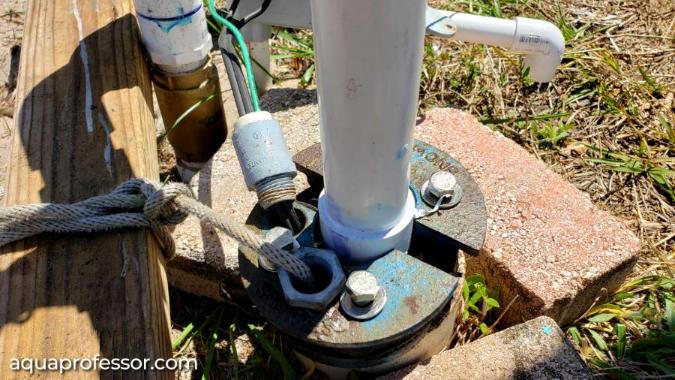
The water may be murky, brown, or even dirty when you first turn on the drinking water tap after installing a new well and pump.
Cause:
This discolored water results from the drilling process, which shakes and stirs sediments and mud. Minerals and sediments can naturally occur in underground water sources and sometimes become suspended in the water due to changes in pressure or flow.
Solution:
Sediment that has been disturbed and churned up takes a few weeks to settle and become clear without additional intervention.
Hard Water Mineral Deposits in Well Water
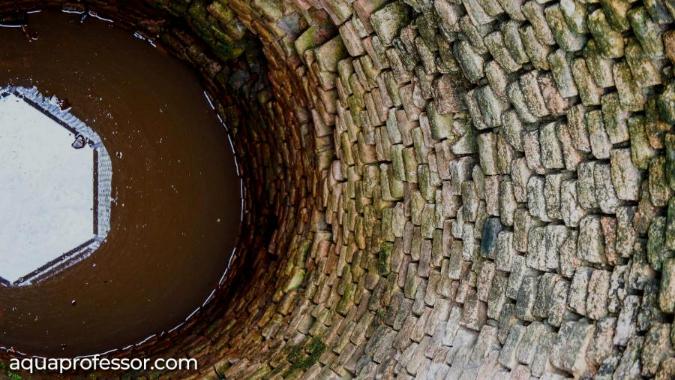
Metals that have been dissolved in water may look like sediment. In addition to manganese, magnesium, and iron, many other minerals can be naturally found in water. Do note that minerals in well water are not necessarily a problem, as many minerals are essential for human health.
However, when present in excess quantity (more than 0.3 mg/L in the case of iron and 1 mg/L in the case of manganese), it can:
The potential negative effect of hard water is that it can interfere with the absorption of certain nutrients.
For example, hard water may reduce the absorption of calcium and magnesium from food, which can lead to deficiencies in these nutrients.
Causes:
Solution:
Also Read: 3 Best Softener For Well Water
Sewage Contamination
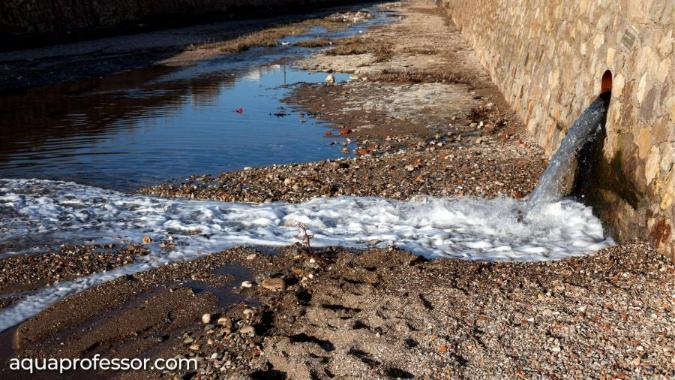
Wells close to sewage treatment facilities or agricultural areas are at risk of contamination.
Cause:
Simply put, if your septic system is broken or backed up, animal or human waste could leak into the soil around your well.
Due to a system backup, effluent has been released into the soil near your well, which could cause a black substance to appear in the water.
Act immediately as human or animal waste is likely to contain potentially harmful pathogens and bacteria like E. coli and cause diarrhea and typhoid.
Solution:
Pumping and cleaning the tank with professional help is necessary before using the well water. Drink only bottled water until you’ve had it tested and know that bacteria aren’t present.
Also Read: Why My Water Softener Tank Has Brown Sludge?
Decomposition of Organic Matter
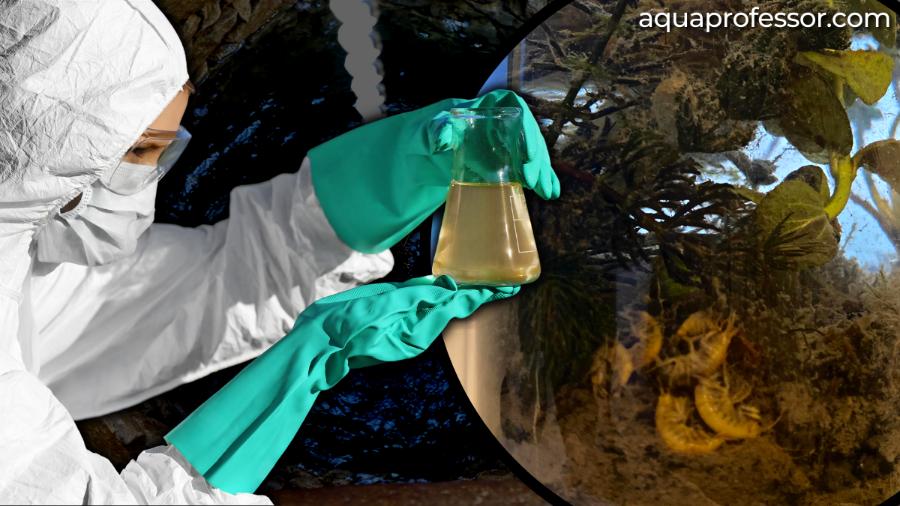
Organic matter is another common substance to be found at the bottom of a well. Symptoms include a foul odor coming from your water pipes and a long, stringy buildup in your pump basket as the organic matter decomposes.
Cause:
Your well’s water will turn murky black as dead insects and rotting vegetation break down and release their contents into the water. Less than 50 feet deep wells are more likely to get contaminated by decomposing organic matter.
Over time, sedimentation like this can build up and clog your home’s pump or supply pipe.
Solution:
Only a trained expert can get to the bottom of the issue and stop it in its tracks; therefore, it’s best to hire one.
Also Read: What To Do If Your Well Runs Out of Water?
Mud or Sand Deposition
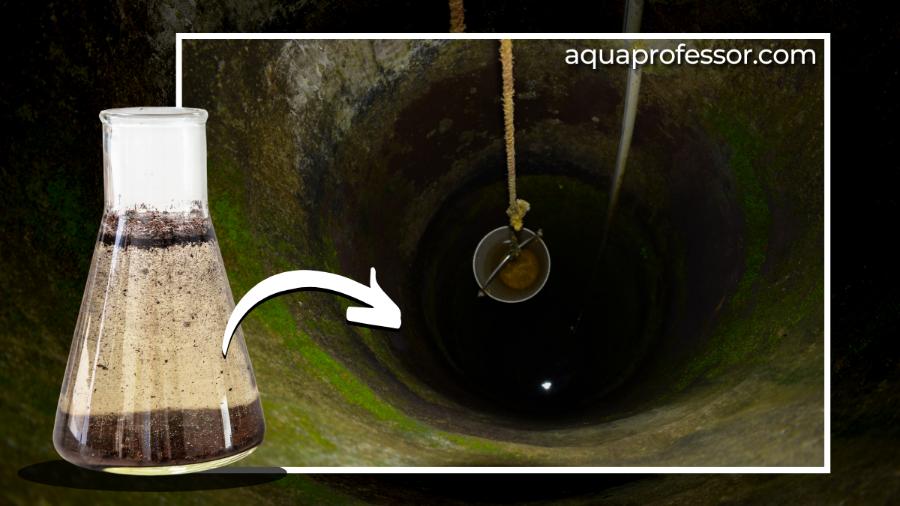
Natural seepage from the aquifer into your well might introduce mud or soil particles. It is bothersome, but it certainly won’t harm you in any serious way.
Cause:
If your well pump is situated too low in the aquifer, sludge or soil might be sucked into your water supply, resulting in muddy water.
Solutions:
Well Damage

Cause:
Wells that aren’t built properly (like not properly drilled) or partly collapsed can cause sediment and dirty water. Also, the well casing or screen might be damaged or collapse due to heavy rain, earthquakes, or even decades of deterioration.
Solution:
Also Read: Why Is My Well Water Cloudy After Heavy Rain?
Erosion of rubber pipes
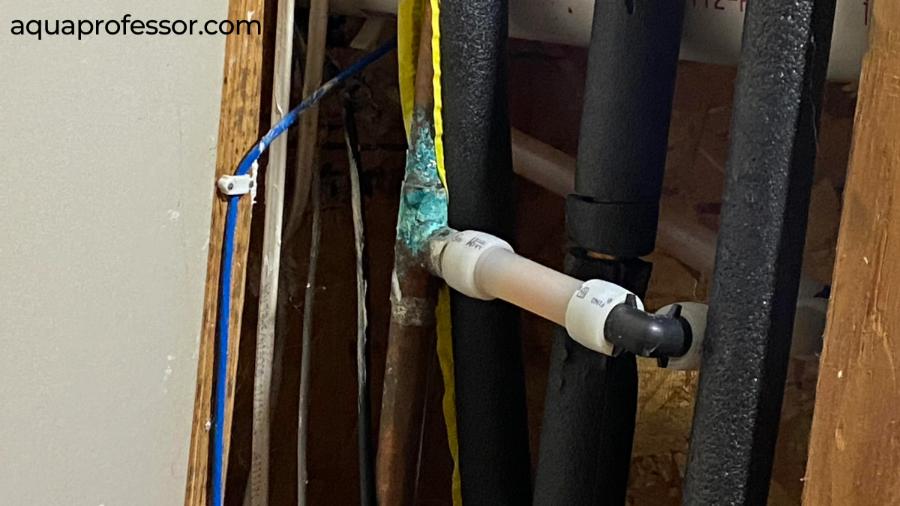
Your well water problem may not be caused by the well but by other fixtures. For example, your water supply might be contaminated by the breakdown of rubber hoses, seals, and gaskets in some of your appliances.
Cause:
Small quantities of black sediment may occasionally be released into the water system from a water heater or similar equipment with rubber pipes. It is due to the breakdown of the rubber. Over time, rubber pipes deteriorate or degrade, releasing a murky substance into the supply.
Solution:
The only solution to decomposing rubber in water heaters and other appliances is to replace either the equipment or the rubber parts.
How To Detect What’s Causing Black Well Water?

In order to identify problems with well water, it is necessary to have the water tested by a reputable lab.
If you have a private well at your home or business, it is highly recommended to have the water quality tested using the Tap Score test kit (recommended by the Water Systems Council).
If testing the well water does not reveal the source of the discoloration, the next step is to have your well inspected.
To check the condition of the good casing, pump, and screen, a contractor can lower a camera down the well. The inspector will know what to do if any deterioration or damage is discovered.
Note:
Well water should be tested annually, even if there have been no water supply changes, as per the Environmental Protection Agency (EPA) advice.
How to Get Rid of Black Well Water Sediments?
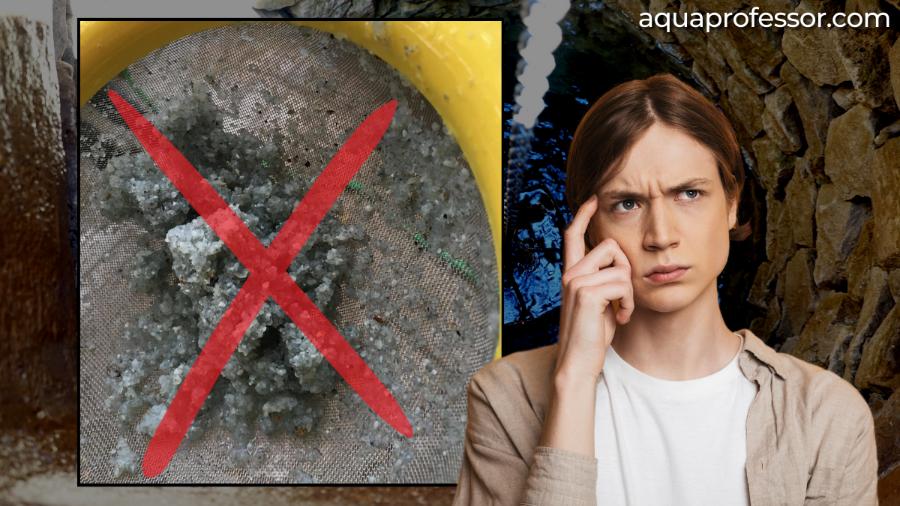
There are various methods for removing black sediments from well water. Understanding the source of the black sediments in your well water is critical to selecting the most efficient strategy for eliminating them.
Consider the following options:
Install a sediment filter:
Installing a sediment filter can assist in removing bigger sediment particles from your well water, such as black sand, debris, and mud soil. You may put these filters at the point where water enters your home or immediately on your faucet or showerhead.Use a water treatment system:
You can use home water filter systems to remove well water’s black sediments, which includes RO, which removes many impurities, or a specialized iron filtration system to remove iron and manganese.Use chemical treatment:
In some situations, adding chemicals to your well water can help dissolve or precipitate out some impurities, such as iron or manganese. It would be best if you only used these treatment processes with extreme caution and under the supervision of a competent practitioner. If the sediments in your well water are caused by physical disturbances or bacterial contamination, they may need to be removed by having a professional clean and disinfect the well.
Have the well cleaned:If the sediments in your well water are caused by physical disturbance or bacterial contamination, having the well cleaned and disinfected by a professional may be necessary to remove them.
Black Sediment In Well Water: FAQs
Is it normal to have sediment in well water?
Well water often contains a noticeable amount of black sediment. Natural minerals, sand and gravel, bacteria and algae, and even pipe and casing corrosion can all contribute to the sedimentation of a well’s water supply.
Is sediment in well water dangerous?
Most of the sediments in the water are not dangerous. However, sewage and heavy metals in sediment can be dangerous for human health.
Improper well construction, septic tank, or animal dump near your well increases the chances of sewage contamination. Heavy metals like lead can cause major health concerns, particularly in children and pregnant women. Long-term lead exposure can result in brain impairment, kidney damage, excessive blood pressure, and other major health concerns.
Why is there sediment in my well water suddenly?
Sand and sediment being pumped from a well may signal that the well is becoming overfilled or that the pump is installed too low in the well, close to the bottom. Other potential causes include variations in water level, usage, weather, chemical or bacterial contamination, and physical disturbances that may have altered the well’s natural sediment layers.
Why is there red sediment in well water?
The red sediment in your water is most likely due to iron. It poses no threat if its concentration is less than 0.3 mg/L in water.
Red sediment can occur because of well casings and piping corrosion, introducing iron to your water supply. In addition, groundwater often contains naturally occurring iron bacteria, which thrive by consuming the dissolved iron in the water.
What makes your water filter turn black?
Iron or rust in the water is a common cause of a whole-house water filter turning black. Reasons for this include iron-rich well water or outdated plumbing. In addition, harmful bacteria can form on the surface of a water filter if it is not properly maintained and cleaned, causing it to turn black.

Naina has a profound understanding of how water quality affects our overall well-being. Her expertise is a guiding light for those seeking to live a healthy life. Besides raising awareness, her write-ups provide practical advice on identifying and mitigating water-related issues.
